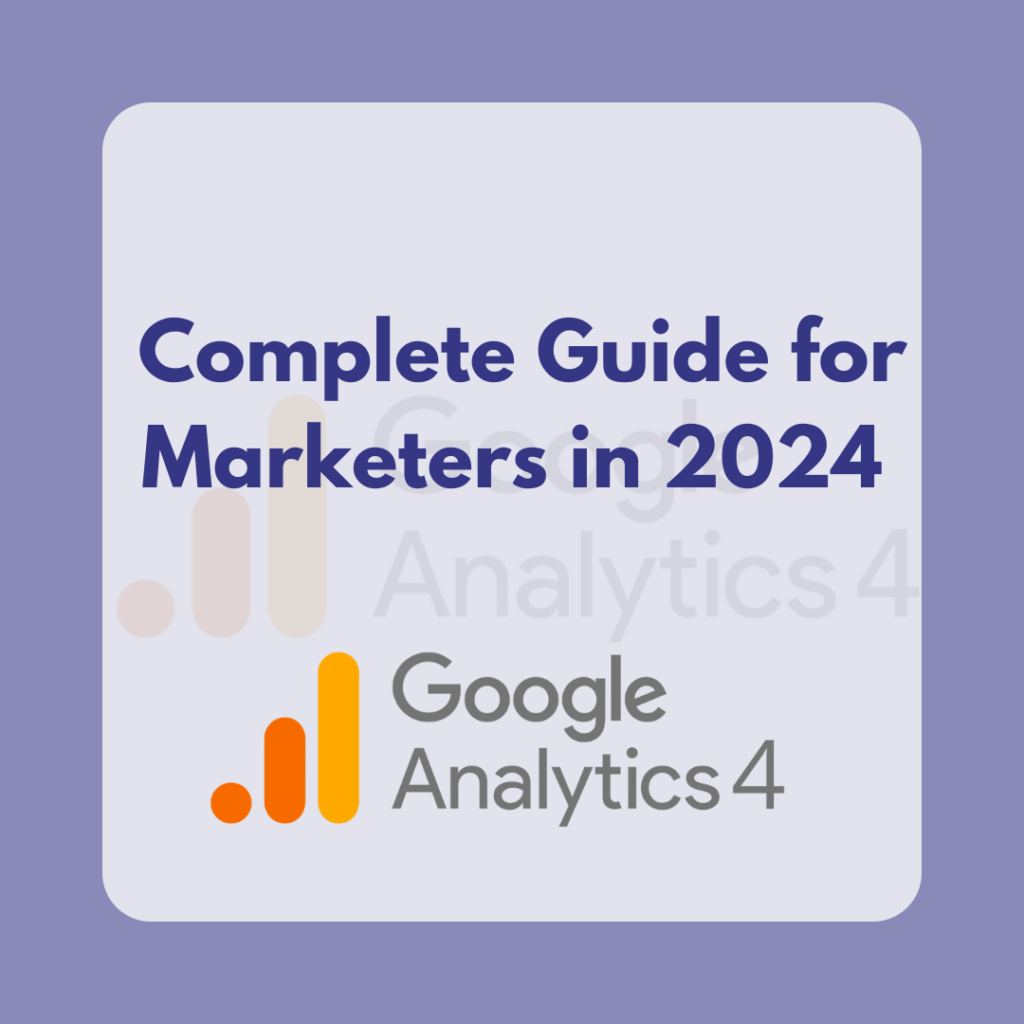Complete Guide of Google Analytics 4 for Marketers in 2024
Introduction
In the fast-paced realm of digital marketing, web analytics is the linchpin for crafting effective strategies. Google Analytics, a cornerstone in this space, has undergone a significant evolution from Universal Analytics to Google Analytics 4 (GA4). This comprehensive guide aims to empower marketers with the knowledge needed to navigate the advanced features of GA4, covering its evolution, key features, setup processes, and best practices.

Table of Contents
Evolution from Universal Analytics to Google Analytics 4
The transition from Universal Analytics to GA4 represents a strategic move to align analytics with the dynamic user behaviors observed in today’s digital landscape. This section explores the limitations of its predecessor and how GA4 introduces a more advanced and user-centric platform, not just as a technological shift but as a strategic response to modern user interactions.
Key Features of Google Analytics 4
a. Event-Driven Tracking
GA4 places events at the forefront, moving away from the traditional emphasis on pageviews. This shift signifies a more nuanced understanding of user engagement, allowing marketers to focus on specific actions for a deeper level of data collection.
b. User-Centric Measurement
Adopting a user-centric approach, GA4 shifts from the session-based model, acknowledging users’ seamless transitions across devices. Marketers gain a holistic view of user interactions for precise targeting and personalized strategies.
c. AI and Machine Learning Integration
GA4 stands out with its integration of AI and machine learning, offering predictive metrics and anomaly detection. This infusion of smart technologies empowers marketers to proactively optimize strategies and anticipate user behavior.
d. Cross-Platform Tracking
Addressing the challenge of multi-device usage, GA4 seamlessly tracks user interactions across different platforms, ensuring a comprehensive view of the customer journey.
Setting Up Google Analytics 4
a. Account Creation and Property Setup
Creating a GA4 account involves a structured process, emphasizing the importance of linking GA4 with other Google services, particularly Google Tag Manager, for an integrated analytics experience.
b. Installing GA4 Code
The installation of the GA4 tracking code is pivotal for accurate data collection. This section provides a detailed walkthrough and troubleshooting tips for seamless implementation.
Understanding GA4 Reports
a. Realtime Reports
GA4 Realtime reports offer a live view of user interactions, providing immediate insights. This section explores the significance of real-time monitoring for ongoing marketing campaigns.
b. Analysis Hub
The Analysis Hub within GA4 is a robust tool for in-depth data analysis. This section delves into the capabilities of the Analysis Hub, guiding marketers in creating custom reports and applying advanced segmentation techniques for unique insights.
c. Events and Conversions
Events and conversions are central to GA4’s performance measurement. This section provides a detailed explanation of event tracking and conversion measurement, crucial for understanding the effectiveness of marketing campaigns.
Marketing and Advertising Insights
a. Integration with Google Ads
GA4 seamlessly integrates with Google Ads for enhanced campaign tracking. This section explores how marketers can leverage GA4 data to optimize ad spend and targeting.
b. E-commerce Tracking
For businesses with an online presence, e-commerce tracking in GA4 is paramount. This section provides a step-by-step guide on setting up e-commerce tracking and analyzing reports for actionable insights.
User Privacy and GA4
This section addresses how GA4 respects user consent and balances data collection with privacy considerations, aligning with evolving privacy standards and regulations.
Best Practices for Marketers
a. Regular Audits and Maintenance
Regular audits of GA4 configurations are crucial. This section provides a checklist for routine check-ups, ensuring settings align with evolving business needs and industry standards.
b. Customization and Advanced Settings
To unlock GA4’s full potential, marketers are encouraged to explore advanced settings for tailored insights. This section offers practical tips on creating custom reports and dashboards, empowering marketers to adapt GA4 to their specific business objectives.
Conclusion
This comprehensive guide concludes by emphasizing the immense potential of GA4 in shaping data-driven marketing strategies. Armed with the knowledge from this guide, marketers can harness the full power of GA4, unlocking valuable insights to enhance their digital presence and drive business growth. The guide serves as an invaluable resource for marketers navigating the advanced features of GA4, empowering them to stay ahead in the dynamic landscape of digital marketing.




